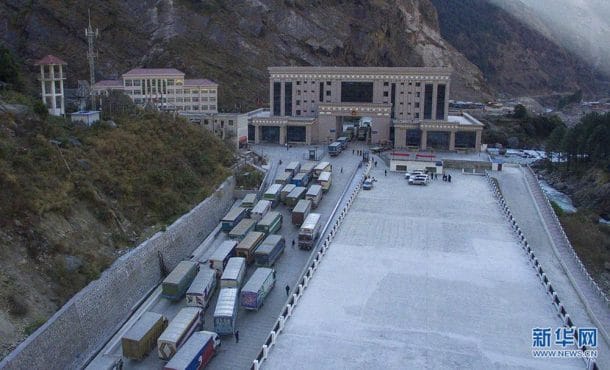The K2 season appears to be over, with an estimated 112+ summits by at least six teams. Multiple teams turned back on their summit push due to unstable conditions. Each of Pakistan’s five 8000ers saw summits this summer in what could be called a “difficult weather” season. On K2, it felt like there was only one suitable weather window, July 27, and it was mixed. All of the K2 summits used the Abruzzi (SE Ridge) route. At least one team is still planning on a Broad Peak attempt.
Big Summits but no Record
Early reports had Pakistan issuing 1,400 climbing permits across their mountains, so expectations of record summits followed. Tracking summits for K2 is very difficult as there is no central source willing to share even the number of permits issued, and not every operator provides detailed accounting. I’ve contacted the Alpine Club Pakistan, which issued my summit certificate and keeps track of their climbing stats, but I have had no success.
However, Karrar Haidri, secretary of the Alpine Club of Pakistan, told AFP there were 57 expeditions planned for 23 Pakistan peaks this season — with 370 climbers for K2. Other sources said 180 people left for the summit on July 27.
By my count, last year, 2022, had the highest number of K2 summits, with 200 summits, dwarfing the previous record year in 2018 of 62. There was one death this summer, Pakistani High Altitude Climber Mohammad Hassan. Reports of his cause of death differ from various sources, from an avalanche and a fall to being hit by ice from the serac. Efforts to revive him failed. My condolences to his family.
But lots of Sherpa Summited
K2 was once a mountain climbed by a few professionals or hardy amateurs with limited support, but over the past several years, that changed. High-profile Nepali operators have imported a significant number of uber-strong Sherpas in a high support-to-client ratio to reach the summit. For five Nepali operators, they supplied sixty-one Sherpas for thirty-nine clients or a ratio of 1:1.6. This is similar to the formula used on Everest.
- 8K Expeditions: 36 summits: 15 clients, 21 Sherpas (1:1.4)
- Seven Summits Treks: 24 summits: 9 clients, 14 Sherpas, 1 Pakistan (1:1.55)
- Imagine Nepal: 12 summits: 5 clients, 7 Sherpas (1:1.4)
- Pioneer Adventure: 3 summits: 1 client, 2 Sherpas (1:1:2)
- Elite: 23 summits: 7 clients, 16 Sherpas (1:2.3)
- 7 Summits Club: 20 summits: 10 clients, 10 (estimated) Sherpa/Guides (1:1)
Pakistan Climbing Evolving
Pakistan does not have enough high altitude support climbers, aka HAPs, to support the large number of clients brought in by the Nepali and Western operators, so these operators bring in Sherpas from Nepal to support their Karkarum expeditions. But, this is slowly changing, with more Pakistani climbers being trained or getting real-world experience.
Many Pakistanis are now climbing for themselves and not in support of others. Sajid Ali Sadpara got his remaining Pakistani 8000er with Broad Peak. He now has eight, all without Os. Naila Kiani became the first Pakistani female climber to summit Nanga Parbat. She has seven of the fourteen. Samina Baig became the first Pakistani female to summit K2. They are part of the emerging young Pakistani climbers today.
Standout Nepali Summits
The top of this list has to be Tenjen (Lama) Sherpa, who summited all fourteen 8000ers along with Norwegian climber Kristin Harila in three months. This is an amazing physical and logistical achievement, even with the caveats that are well-known and publicized. Next was Mingma David Sherpa, who summited K2 for the sixth time. Lhakpa Sherpa, 49, who lives with her daughters in the US, summited K2 for the first time, noteworthy as she has the most Everest summits by a female at ten. She had previously attempted K2 in 2010. Nima Rinji Sherpa, at 17 years and 99 days, summited all five of Pakistan’s 800ers this season and is the youngest person to summit K2. He has twelve now, leaving only Cho Oyu and Shishapangma to be summited.
Not to be left out, kudos to Mexican Viridiana Alvarez on completing her fourteen with Broad Peak.
Different Levels of Risk Tolerance
Similar to what we saw on Manaslu last Autumn, the Nepali companies were willing to take larger risks than the Western operators. On Manaslu, all the Western (Europe, Australia, New Zealand, Americas) operators abandoned their climbs after avalanches took several lives and made climbing too risky. However, most Nepali operators stayed and put people on the summit despite those conditions, even though a few Nepali operators also ended their expeditions with no summits. This difference in “risk tolerance” is becoming a visible way for potential clients to select an operator that matches their personal risk profile.
Several Western teams turned back on this summer’s K2 summit push, fearing long lines of climbers behind the rope fixers that would put their clients directly under the hanging serac or in the bottleneck for hours. Multiple climbers reported small avalanches, but others cited releases from the serac, while some blamed the high winds for blowing fresh snow around the climbers. The upper sections of K2 are well-known for swirling winds that usually blow new snow away; thus, avalanche danger is normally not as much of an issue as fear of the serac releasing a sliver onto the route. In any case, the Western leaders deemed the area unstable and pulled their clients off the summit push. They included:
- Madison Mountaineering: estimated six clients with nine Sherpas
- Furtenbach Adventures, which usually has a two-to-one support-to-client ratio on their “Flash” climbs
- Mountain Professionals – specific numbers of clients and support never revealed.
Also notable in their attempt and retreat was American Lucy Westlake, 19, who was trying to be the youngest American to summit K2 and raise awareness around clean water with organizations like WaterStep. She turned back upon seeing the dangers. I thoroughly enjoyed reading her honest assessment of that night on K2:
I know there are many stories, opinions, and debate around what happened on K2 July 27th. I’m not here to pass judgements on people – every mountaineer must decide what boundaries they will push to make the summit, and that is their right. I am here to tell my story and what lead me to the decision to turn around…
Me, Mingma, and Aussie (a friend I made while on K2 and a very experienced mountain guide) began our summit day at 12:00am. We knew there was a lot of snow up higher on the mountain and MANY people planning to ascend at the same time (around 150), so we decided to start later in hopes that spreading out people would lessen avalanche danger. We didn’t see anyone for 2.5 hours, until we reached a snow field ending in a steep wall with a large crevasse and seracs above (pic 2). The wall was dotted with headlights apparently not moving. We then heard that a climber was stuck in a crevasse up on the wall, and people were unable to get him out. We continued onward passing groups, but when we got close to the wall, an avalanche hit us – luckily, we were not totally buried or injured. However, we knew that this avalanche was a sign of more to come, and we turned back to avoid risking our lives and the lives of others.
I don’t at all regret this experience. I love summits and records, but those aren’t the reasons I climb. I climb because I love the mountains… their beauty, their adventure, the ways they push you beyond anything you ever dreamed possible. This mountain has changed me in so many ways and connected me with some amazing people. I’m so blessed to have K2 as part of my story. She exceeded my wildest expectations.
Making it All Possible
Of course, the rope-fixing team enabled all the summits:
- Pasang Nurbu Sherpa
- Mingtemba Sherpa
- Ngima Dorchi Sherpa
- Pasang Dukpa Sherpa (Till 8500m)
- Tenjen Sherpa
- Siddhi Ghising
- Ahmed Hussain
- Mingma Dorchi Sherpa
- Ngatshi Sherpa
- Pasang Nuru Sherpa
And for the rest:
Karrar Haidri, secretary of the Alpine Club of Pakistan, was quoted that 200 people would attempt Broad Peak, Gasherbrum I and Gasherbrum II.
Gasherbrum I – 63+ Summits
Two more climbers, Denis Urubko and Pipi Cardell, may still be on the peak planning a new route
Gasherbrum II – 65+ summits
The season appears to be over
Why Climb when you can Ski?
Polish ski mountaineer Andrzej Bargiel, 35, who skied K2 a few years ago, added Gasherbrum I and II – without using supplemental oxygen. This is a great video of his descent on GII:
Broad Peak – 61+ summits
At least one more team to go
Nanga Parbat – 60+ Summits
The season appears to be over with sixty summits.
Congratulations to all this season.
Climb On!
Alan
Memories are Everything
The Podcast on alanarnette.com
You can listen to #everest2022 podcasts on Spotify, Apple Podcast, Google Podcasts, Pocket Casts, RadioPublic, Anchor, and more. Just search for “alan arnette” on your favorite podcast platform.
Summit Coach
Schedule a Free Call
 If you dream of climbing mountains but are not sure how to start or reach your next level, from a Colorado 14er to Rainier, Everest, or even K2, we can help. Summit Coach is a consulting service that helps aspiring climbers throughout the world achieve their goals through a personalized set of consulting services based on Alan Arnette’s 25 years of high-altitude mountain experience, including summits of Everest, K2, and Manaslu, and 30 years as a business executive.
If you dream of climbing mountains but are not sure how to start or reach your next level, from a Colorado 14er to Rainier, Everest, or even K2, we can help. Summit Coach is a consulting service that helps aspiring climbers throughout the world achieve their goals through a personalized set of consulting services based on Alan Arnette’s 25 years of high-altitude mountain experience, including summits of Everest, K2, and Manaslu, and 30 years as a business executive.





2 thoughts on “K2 2023 Coverage: Sherpas Dominate K2”
Many thanks for your coverage Alan. Excellent as always.
Lucy Westlake – well done- lovely wise words .
Comments are closed.